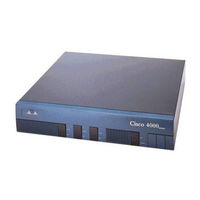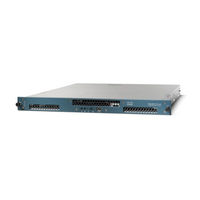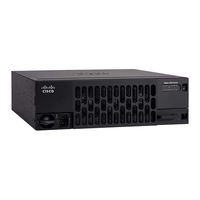Cisco 4700 series Manuals
Manuals and User Guides for Cisco 4700 series. We have 4 Cisco 4700 series manuals available for free PDF download: Administration Manual, Configuration Manual, Installation Manual
Cisco 4700 series Configuration Manual (388 pages)
Application Control Engine Appliance Security
Table of Contents
-
-
ACL Overview26
-
-
-
-
AAA Overview72
-
-
-
-
-
Group109
-
-
-
-
-
-
-
-
Description188
-
Policy191
-
-
-
-
-
Map
235 -
Map
246-
Information253
-
-
-
-
Action343
-
Service Policy344
-
-
Policy357
-
-
Clearing Xlates370
Advertisement
Cisco 4700 series Administration Manual (418 pages)
Application Control Engine Appliance
Brand: Cisco
|
Category: Network Router
|
Size: 7.4 MB
Table of Contents
-
-
-
-
-
-
Class Maps119
-
Policy Maps120
-
Service Policies123
-
-
-
-
-
Through the ACE159
-
Map
170
-
-
-
-
Copying Files205
-
Moving Files213
-
Deleting Files214
-
-
-
-
-
Configuring SNMP311
-
-
SNMP Overview312
-
-
-
-
XML Overview366
-
-
Format388
-
-
-
Before You Begin394
Cisco 4700 series Administration Manual (292 pages)
Application Control Engine Appliance
Table of Contents
-
-
-
-
-
-
-
-
Copying Files104
-
Moving Files111
-
Deleting Files112
-
-
-
-
-
Default Settings150
-
-
-
-
-
Configuring SNMP217
-
-
Default Settings252
-
-
Appendix
267 -
Advertisement
Cisco 4700 series Installation Manual (18 pages)
Rack-Mount and Wall-Mount
Brand: Cisco
|
Category: Network Router
|
Size: 0.34 MB



